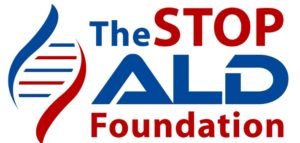
ARM Member Profiles
Stop ALD Foundation


WHAT IS ALD?
Adrenoleukodystrophy, or ALD, is a deadly genetic disease that affects 1 in 18 000 people. It most severely affects boys and men. This brain disorder destroys myelin, the protective sheath that surrounds the brain’s neurons — the nerve cells that allow us to think and to control our muscles. It knows no racial, ethnic or geographic barriers.
The most devastating form of ALD appears in childhood, generally between the ages of four and ten years old. Normal, healthy boys suddenly begin to regress. At first, they simply show behavioral problems, such as withdrawal or difficulty concentrating. Gradually, as the disease ravages their brain, their symptoms grow worse, including blindness and deafness, seizures, loss of muscle control, and progressive dementia. This relentless downward spiral leads to either death or permanent disability, usually within 2 to 5 years from diagnosis.
Today, new scientific knowledge offers hope for the successful treatment and prevention of ALD. But it is urgent that we invest in research that will advance new therapies, as well as new tools for early diagnosis and educational campaigns that will raise awareness so that children with ALD can be identified as early as possible, while there is the best hope of a beneficial treatment.
Advancing such research is the goal of the Stop ALD Foundation. Like a venture capital firm, we identify gaps in the development process, seek out creative solutions to fill those gaps, and deliver the resources that can develop these great ideas into concrete projects, and projects into therapies that can transform the lives of children with ALD and their families.
ADRENOLEUKODYSTROPHY
Adrenoleukodystrophy, or ALD, is an x-linked metabolic disorder, characterized by progressive neurologic deterioration due to demyelination of the cerebral white matter. Brain function declines as the protective myelin sheath is gradually stripped from the brain’s nerve cells. Without that sheath, the neurons cannot conduct action potentials—in other words, they stop telling the muscles and other elements of the central nervous system what to do.
This sequence of events appears to be related to an abnormal accumulation of saturated very-long-chain fatty acids (VLCFA) in the serum and tissues of the central nervous system, which sets off an abnormal immune response that leads to demyelination. It is unclear exactly how this chain of events works, but scientists do know that it has its roots in genetics.
ALD is caused by a genetic abnormality, commonly referred to as a “genetic mutation”, affecting the X chromosome, otherwise known as an “x-linked” condition. Everyone has two sex chromosomes: women have two X chromosomes and men have an X and a Y chromosome. If a woman inherits the abnormal X chromosome, she still has a normal, second X chromosome to help balance out the affects of the mutation. Boys and men do not have a second X chromosome, so if they inherit this genetic abnormality, they will get the disease.
ALD takes several forms, which can vary widely in their severity and progression. They include:
CHILDHOOD CEREBRAL DEMYELINATING ALD
This is the most common form of ALD, representing about 45% of all ALD cases. It is characterized by an inflammatory process that destroys the myelin, causing relentless progressive deterioration to a vegetative state or death, usually within five years.
ADRENOMYELONEUROPATHY (AMN)
The majority of other cases of the disease occur as the adult form, known as AMN. In about half of the sons who inherit the mutated ALD gene, symptoms of the disease do not develop until young adulthood, and in general, they progress more slowly. Beginning in their 20s and 30s, these young men exhibit neurological based motor lesions in their extremities. These lesions progress over many years and are inevitably accompanied by moderate to severe handicap. In approximately one third of these patients the central nervous system also becomes involved. These young men undergo the same mental and physical deterioration as the previously described boys. The progress of the disease is slower, usually declining to a vegetative state and/or death in 5 years or longer. There is no effective treatment for the adult onset of ALD, which is commonly referred to as adrenomyeloneuropathy (AMN); rather, medication and therapies are employed in a palliative manner.
ADDISON’S DISEASE (HYPOADRENOCORTICISM)
Most boys and men with ALD/AMN have Addison’s disease, a disorder of the adrenal gland; in about 10% of ALD cases, this is the only clinical sign of the disorder. The adrenal glands produce a variety of hormones that control levels of sugar, sodium, and potassium in the body, and help it respond to stress. In Addison’s disease, the body produces insufficient levels of the adrenal hormone, which can be life-threatening. Fortunately, this aspect of ALD is easily treated, simply by taking a steroid pill daily (and adjusting the dose in times of stress or illness)
FEMALE ALD
Although women who carry the ALD gene mutation do not generally develop the brain disease itself, some display mild symptoms of the disorder. These symptoms usually develop after age 35, and primarily include progressive stiffness, weakness, or paralysis of the lower limbs, numbness, pain in the joints, and urinary problems.
